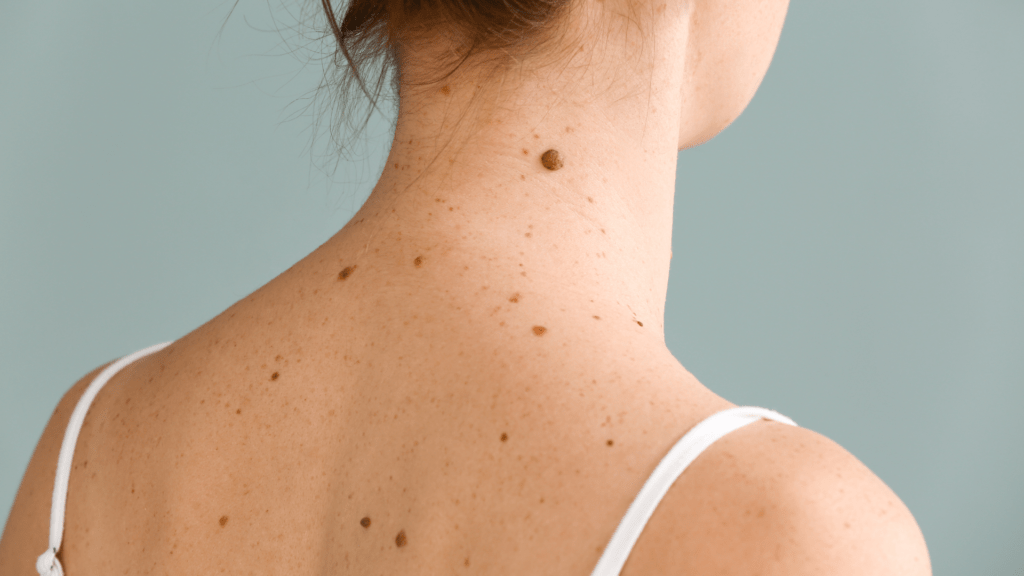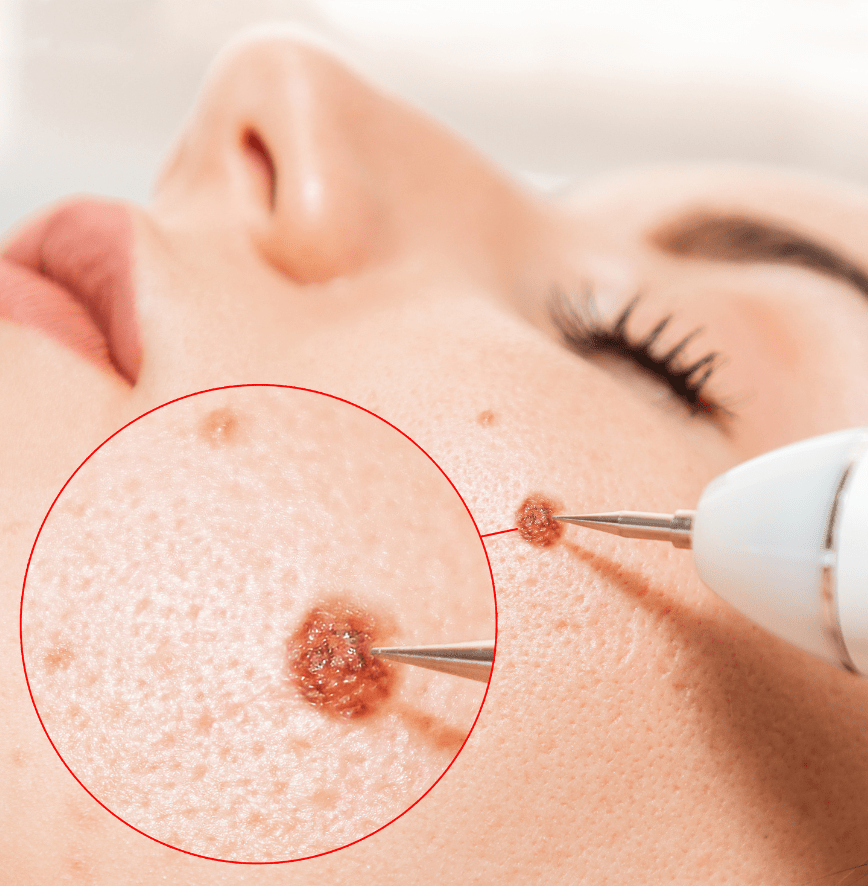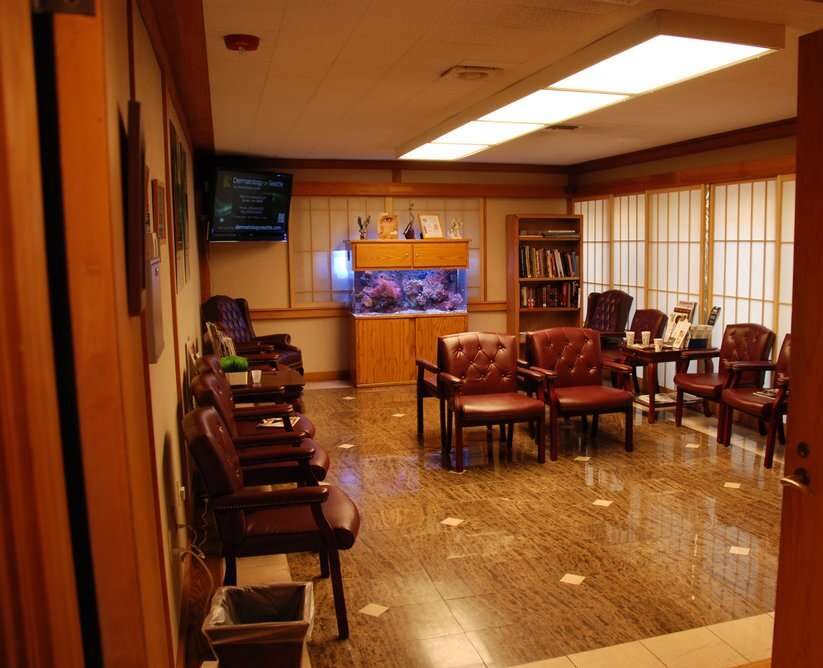Moles
What is a mole?

They’re also called nevi. If a mole grows, begins to itch or bleed, make an appointment at Dermatology of Seattle. Normal moles are typical and common in adults. You should not worry about normal moles, but should be aware of changes in any mole. Melanoma, a skin cancer, can grow in moles.
What causes moles?
Everyone has common moles, and there are other types, some of which increase the risk of melanoma. Atypical moles can look like melanoma, but are not. Many of these can be a sign of increased risk of melanoma, and they usually appear on the body but not the face. “FAMMM” is “familial atypical multiple mole-melanoma” a condition in which people have many moles. Congenital moles are moles a person is born with, and can be small or very large. There is also the spitz nevus, which can look very much like melanoma, and most of these appear on the skin in the first 20 years of a person’s life, but can develop in adults. Acquired moles are moles which appear after a person is born, typical in those with light skin.
What are the symptoms?
A normal mole has these traits: one color, round, flat or slightly raised, without change. Not all moles will look alike and may disappear with time. Melanoma will be a mole that manifests any of the ABCDEs (Asymmetry, Border, Color, Diameter, Evolving) and means you should make an appointment with a dermatologist at Dermatology of Seattle.
How are moles diagnosed and treated?
Moles generally do not require treatment, but often patients seek treatment if the mole bothers them in some way, or could be skin cancer. Surgical excision or surgical shave involves cutting out the mole and stitching the skin shut. A biopsy may be performed if the mole is suspected to be cancerous. Don’t try to remove a mole at home, as you can scar your skin and cause an infection. After removal of a mole, skin heals. Make another appointment if it grows back, as this is a sign of melanoma.

Hear from Our Patients:
 Villy ToonMarch 29, 2024.The doc was fast, knowledgeable and took great care of the patient.
Villy ToonMarch 29, 2024.The doc was fast, knowledgeable and took great care of the patient. Michael QueyrouzeMarch 26, 2024.Great staff and docs!!!
Michael QueyrouzeMarch 26, 2024.Great staff and docs!!! Nancy ErdmannMarch 25, 2024.Highly recommend! Staff was very helpful and friendly! Hardly any wait time before seeing the doctor! Dr. And his nurse had me in and out after a procedure! Would definitely come back if needed! Even driving from Moses lake! I was seen at the Burien location.
Nancy ErdmannMarch 25, 2024.Highly recommend! Staff was very helpful and friendly! Hardly any wait time before seeing the doctor! Dr. And his nurse had me in and out after a procedure! Would definitely come back if needed! Even driving from Moses lake! I was seen at the Burien location. Misael RiveraMarch 23, 2024.Fast, Professional, reliable and Excellent Services
Misael RiveraMarch 23, 2024.Fast, Professional, reliable and Excellent Services George SamraMarch 22, 2024.Very kind and caring staff. The doctors were very professional and bed side manners were great. Took very good care of my pain tolerance during my surgical procedure. I was very satisfied with the whole process.
George SamraMarch 22, 2024.Very kind and caring staff. The doctors were very professional and bed side manners were great. Took very good care of my pain tolerance during my surgical procedure. I was very satisfied with the whole process. Maela MooreFebruary 4, 2024.Gina Mower is knowledgeable, friendly and efficient. She has a special talent for putting people at ease. I also like this facility a lot. It is clean and spacious with beautiful art throughout.
Maela MooreFebruary 4, 2024.Gina Mower is knowledgeable, friendly and efficient. She has a special talent for putting people at ease. I also like this facility a lot. It is clean and spacious with beautiful art throughout. Scott AllenFebruary 4, 2024.Had a great experience here. It was easy to get an appointment and I was seen right away. Would recommend highly.Google rating score: 4.1 of 5, based on 196 reviews
Scott AllenFebruary 4, 2024.Had a great experience here. It was easy to get an appointment and I was seen right away. Would recommend highly.Google rating score: 4.1 of 5, based on 196 reviews

Get in Touch Now
Have questions or need assistance? Make sure to use our contact form for all inquiries.

